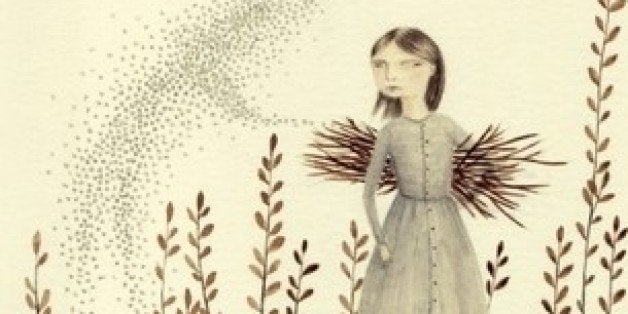
I didn't set out for my novel, Our Endless Numbered Days, to be a book filled with music but that's what it became. From the title to the resolution, music seems to be on every page.
So, let's get the title out of the way first. For all those Iron and Wine fans, the title does come from the album of the same name. I first came across Sam Beam's (aka Iron and Wine) music when I borrowed a CD of The Shepherd's Dog from my local library, ironically chosen because of its cover. I now own all his albums and listen to them on shuffle while I write -- I only need to play Iron and Wine on my iPod and my fingers are itching to type.
My novel had several earlier titles which I discarded (The Great Divide, The Briar Rose, Our Little Life). Our Endless Numbered Days is not only a wonderful phrase which rolls off the tongue, it also has a relevance to the story: When the narrator, Peggy Hillcoat is eight, she's taken by her father, James to live in a remote cabin in a forest. As well as telling her that the rest of the world has disappeared, he stops keeping a calendar and they lose track of their days.
But aside from the songs I listened to, music slipped in between all the words I wrote. Peggy's mother, Ute, is a German concert pianist who won't teach her daughter to play. Ute and James meet when he is her stand-in page turner at a concert at Philharmonic Hall in New York in 1962, conducted by Bernstein:
"Leonard was ein Liebchen... he first kissed me, and then he kissed Jackie Kennedy."
While they're in the forest James teaches Peggy to play the piano, but on one he's made himself out of bits of wood and pebbles. The piano is silent. My own father is a self-taught pianist and (even he would say) not concert-playing standard. When I was growing up I would often lie in bed falling asleep while listening to him playing the piano downstairs, just like Peggy does with Ute.
The main piece of music Peggy plays is "La Campanella" by Liszt. It's the only piece of sheet music James takes with him to the cabin, and so the only one that Peggy learns. It wasn't a piece I knew before I wrote the novel, but I was looking for something that was technically difficult, short and beautiful. The piano that the Hillcoats have at home is a Bösendorfer and in a wonderful moment of synchronicity I discovered a video produced by the piano manufacturer which is set to "La Campanella." Describing a piece of music in words is tricky; it's difficult to convey the intensity of it, how all-consuming it can be. Peggy describes parts of La Campanella as a trapped bird, fighting to escape. She uses the piece -- playing it over and over and singing it to herself -- as a mental escape. Meanwhile Ute uses her piano as an expression of her mood, thumping the keys and playing Chopin's funeral march to show she's unhappy with her husband.
As well as playing the piano, James and Peggy sometimes sing an old girl-guiding song together, the lyrics of which turned out to be very appropriate to the story:
There are suitors at my door, oh alaya bakia
Six or eight or maybe more, oh alaya bakia
And my father wants me wed, oh alaya bakia
Or at least that's what he said, oh alaya bakia
Although I was never a girl-guide, I learned this from a school friend many years ago and it's a song that I taught to my children when they were young for car journeys, or when they were tired on a long walk. For nostalgic reasons my daughter and I still sometimes sing it when we are making beds; my son has moved on to other, grown-up music!
Another childhood favorite of mine, which I passed onto Peggy, is the record of "The Railway Children." This was a vinyl album my sister owned which had scenes from the 1972 film (adapted from the book by E. Nesbit), with the actors speaking their lines inter-cut by the theme music. I played it so often I can recite whole chunks of it still. Peggy hums it when she's worrying about her father.
And then there's the piece of music that everyone knows: "Chopsticks." I'm ashamed to say I never even mastered this -- I can't play the piano. I learned the oboe at school for a while, but didn't get beyond sounding like an injured duck. And I sang in a band when I was a bit older, but we didn't have a microphone and I'm pretty confident no one could hear me. But in Our Endless Numbered Days, Peggy's younger brother teaches her "Chopsticks" on the Bösendorfer, much to Ute's horror.
At the end of the book it's the music of "La Campanella" that ultimately brings mother and daughter back together. Ute has no idea that Peggy learnt how to play the piano when she was in the forest, but finally Peggy is allowed to sit at the Bösendorfer:
"I pressed the keys... and let my fingers follow the flow and pattern they knew by heart. I was aware of Ute turning toward me, of a sharp intake of breath but I closed my eyes and went with the music. And when Ute propped open the piano lid, the room was filled with a magical sound...."